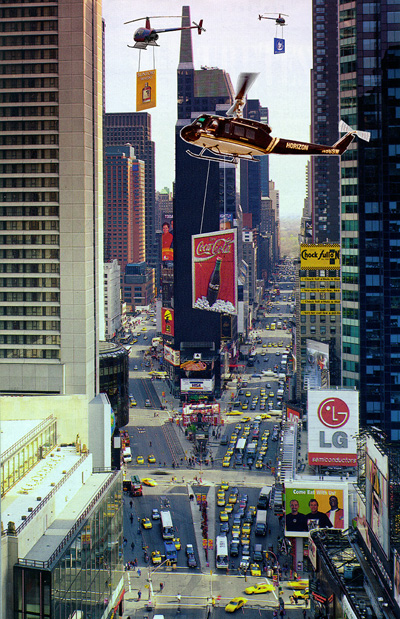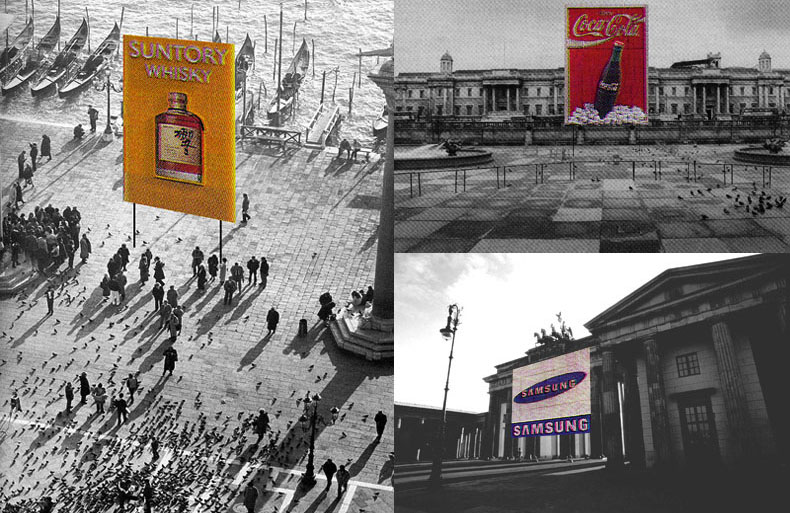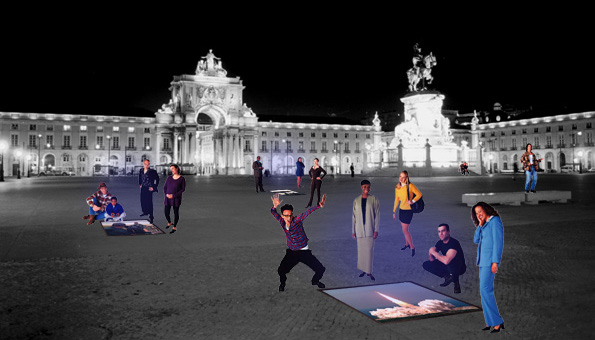Fall 1998
Critic: Joao Mota
Our approach, compromising past and present, reveals the need to understand the image both as icon/index and urban phenomenon, based on contemporary deviations and transformations of the aforementioned historical categories.
The theoretical works of Beatriz Colomina, Rosalyn Deutsche, Rosalind E. Krauss, and others will be used to introduce the constitutive and operative concepts of art and spatial politics. Then, we will speculate with proposals of images within architectural environments for the two mentioned sites.
The objective of this course is not only to investigate the evidence of the elasticity between architectural environments and the images juxtaposed on those environments, but to identify the structure of those operations and to experiment with the design potentials, an applied visual study/ representation of insights pertinent to the two sites: Terreiro do Paco and Times Square. Retrieving for contemporary uses the discontinued tradition of images embedded in architecture.
THE OWNERSHIP of each billboard will be temporarily transfered to the highest bidding city during an auction held on the internet.
THE BILLBOARDS will be removed from times square by helicopters which will deliver them to cargo ships to be transported to their final destinations.
THE BILLBOARDS will be installed in strategic locations in the "host" squares to expose their dis-textuality within the larger image of the city but without being obtrusive to the human scale.
PLAQUES will declare that "this billboard is an authentic fragment from times square".
THIS PROJECT explores the idea of evacuation as a means of liberation from the physical form which will subsequently enable propagation ad infinitum.
TIMES SQUARE, often called the "crossroads of the world", loses its vital parts, the billboards, which are dispersed throughout the world to constitute a more extensive yet abstract body.



TERREIRO DO PACO was therefore one of the birthplaces of the modern era brought about through contact with distant and diverse cultures that produced an understanding of the world based on diversity and discontinuity.
I PROPOSE the installation of television monitors in terreiro do paco that between sunset and sunrise will be broadcasting (image and sound) documentaries and news updates about discoveries, inventions and research developments from a variety of disciplines.
THE MONITORS will be installed on the surface of the plaza neither protruding or receeding from the ground plane. They will be part of the walking surface but at the same time they will constitute focal points around which persons from all walks of life can gather to learn and to exchange ideas.
THE PLACEMENT of the monitors is intentionally "inconvenient" so that people are forced to acknowledge each other's presence. For if the monitors were placed in a vertical position facing seats then people would most probably become comfortably numb in front of the image as it usually happens when one watches television at home.
EACH ONE of the monitors installed in the plaza will focus on a particular field of interest (such as medicine, computer technology, automobile industry etc) so that gradually different parts of the plaza will become gathering/meeting places for persons who share the same interests.
THE CONTENT from each monitor specializing in a topic can also migrate around the plaza. So the monitor usually showing medicine topics can be switched with that showing car industry updates in order to create a confusion that can bring about unexpected situations and to produce a spontaneous choreography in the plaza.
THE SELECTION and editing of the spots to be featured on each monitor will be done by a select team of persons carefully appointed by the ministry of culture of portugal solely based on their specialized knowledge of the topics featured in the plaza and also their ability to continually locate and acquire documentation on the latest developments.
THE SUCCESS of this proposal however relies only partly on the content transmitted through the monitors which is only the means to an end; the end being the creation of situations arising from the meeting and interaction of people who would not otherwise come in contact.
THIS PROPOSAL aims to re-vital-ize the plaza which is currently vacant (especially at night) and to make it again a physical locus for knowlegde through interaction and human communication.

